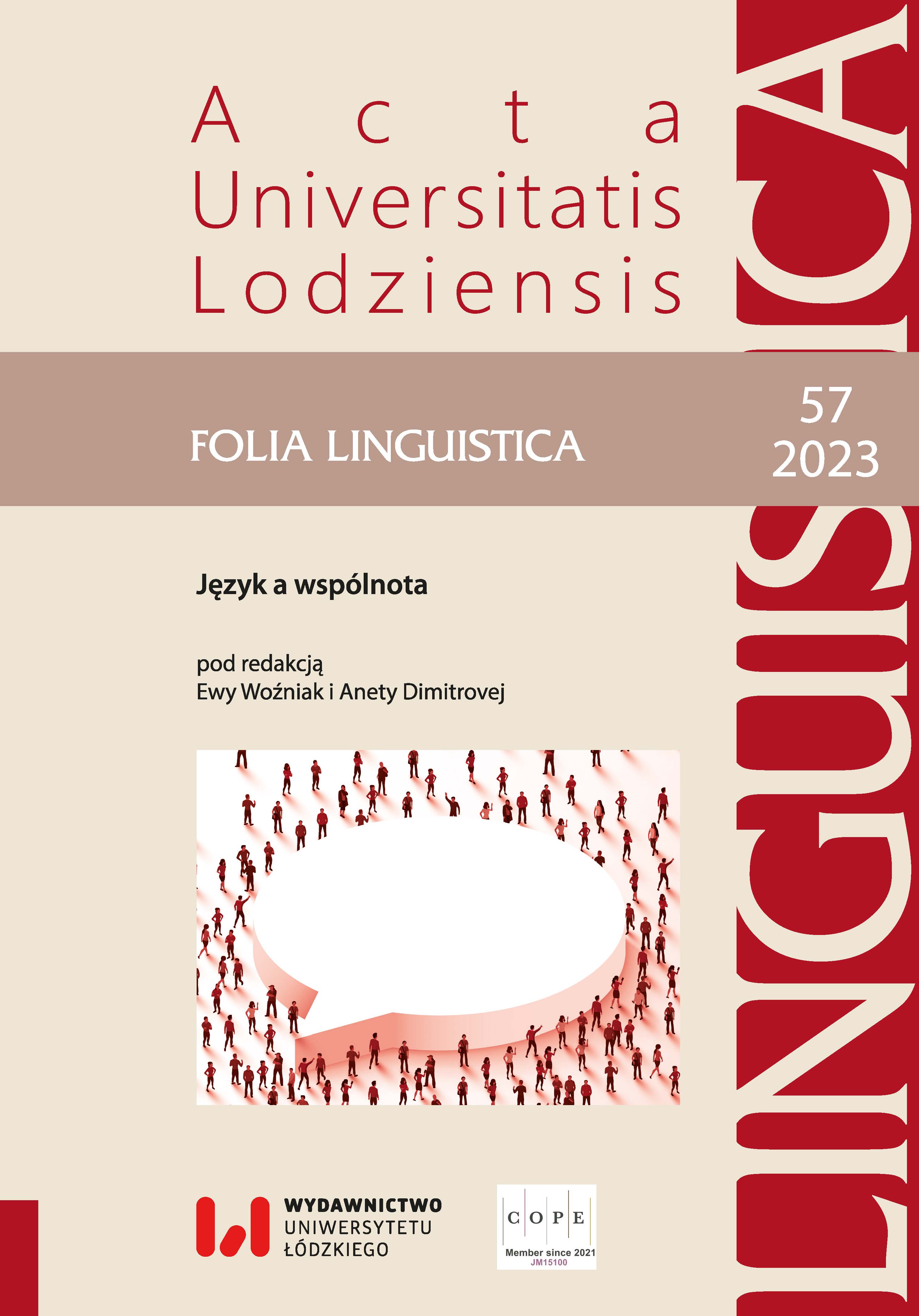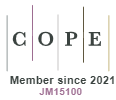Profilowanie obrazu człowieka w językach polskim i rosyjskim (na podstawie materiału leksykograficznego)
DOI:
https://doi.org/10.18778/0208-6077.57.08Słowa kluczowe:
językowy obraz świata, profilowanie, językoznawstwo porównawcze, język polski, język rosyjskiAbstrakt
Celem opracowania jest rekonstrukcja sposobu profilowania obrazu człowieka w polsko- i rosyjskojęzycznym obrazie świata na podstawie wybranych źródeł leksykograficznych od 1 poł. XX wieku do przełomu wieków XX i XXI. Podstawę materiałową stanowią dane zaczerpnięte z artykułów hasłowych leksemów należących do gniazda słowotwórczego człowiek, tj. człowiek, człowieczeństwo, człowieczy, człowiecze oraz ludzie, lud, ludzki, ludzik. Badałem także ich rosyjskie odpowiedniki: человек, человечность, человечный, человеческий, человечий, люди, людской. Badania prowadzone były z zastosowaniem metodologii językowego obrazu świata. Zgromadzony materiał uporządkowany został za pomocą faset. Głównym celem badań było udowodnienie tezy, iż mimo że języki polski i rosyjski są bliskie genetycznie, a także geograficznie, to ze względu na odmienną historię uwidaczniają się pomiędzy nimi znaczące różnice w sferze pojęciowej. Rezultatem pracy jest potwierdzenie postawionej tezy: istnieją znaczące różnice między sposobami profilowania obrazu człowieka w językach polskim i rosyjskim, o czym świadczy odmienna hierarchia faset. W materiale polskojęzycznym reprezentowane największą liczbą przykładów są fasety: pochodzenie, sfera aksjologiczna, charakter, działalność, człowiek jako gatunek, natomiast w materiale rosyjskojęzycznym: relacje zawodowe, relacje ogólnoludzkie, charakter, sfera aksjologiczna, człowiek jako gatunek.
Pobrania
Bibliografia
Апресян Ю.Д. [Apresian J.D.], 1995, Образ человека по данным языка попытка системного описания, ”Вопросы языкознания” [Obraz czełowieka po dannym jazyka popytka sistiemnogo opisanija, ”Woprosy jazykoznanija”] 1, pp. 37–67.
Google Scholar
Bartmiński J., 1990, Punkt widzenia, perspektywa, językowy obraz świata, in: J. Bartmiński (ed.), Językowy obraz świata, Lublin: Wydawnictwo Uniwersytetu Marii Curie-Skłodowskiej, pp. 109–127.
Google Scholar
Bartmiński J., 1993a, O profilowaniu pojęć w słowniku etnolingwistycznym, in: V.N. Toporov (ed.), Philologia Slavica. K 70 letiju akademika N.I. Tolstogo, Moscow: ”Nauka” edition, pp. 12–19.
Google Scholar
Bartmiński J., 1993b, O profilowaniu pojęć w słowniku etnolingwistycznym, in: J. Bartmiński (ed.), Profilowanie pojęć. Wybór prac, Lublin: Wydawnictwo Uniwersytetu Marii Curie-Skłodowskiej, pp. 7–17.
Google Scholar
Bartmiński J., 1996, O ”Słowniku stereotypów i symboli ludowych”, in: I. Bartmińska, J. Bartmiński, S. Niebrzegowska (eds), Słownik stereotypów i symboli ludowych, vol. I, [part] 1, Lublin: Wydawnictwo Uniwersytetu Marii Curie-Skłodowskiej, pp. 9–34.
Google Scholar
Bartmiński J., Chlebda W., 2008, Jak badać kulturowo-językowy obraz świata Słowian i ich sąsiadów?, ”Etnolingwistyka” 20, pp. 11–27.
Google Scholar
Bartmiński J., Niebrzegowska S., 1998, Profile a podmiotowa interpretacja świata, in: J. Bartmiński, R. Tokarski (eds), Profilowanie w języku i w tekście, Lublin: Wydawnictwo Uniwersytetu Marii Curie-Skłodowskiej, pp. 211–224.
Google Scholar
Bartmiński J., Tokarski R., 1986, Językowy obraz świata a spójność tekstu, in: T. Dobrzyńska (ed.), Teoria tekstu. Zbiór studiów, Wrocław: Zakład Narodowy
Google Scholar
im. Ossolińskich, pp. 65–81.
Google Scholar
Grzegorczykowa R., 1990, Pojęcie językowego obrazu świata, in: J. Bartmiński (ed.), Językowy obraz świata, Lublin: Wydawnictwo Uniwersytetu Marii Curie-Skłodowskiej, pp. 41–59.
Google Scholar
Grzegorczykowa R., 1993, POKORA, PYCHA i pojęcia pokrewne, in: J. Bartmiński, M. Mazurkiewicz-Brzozowska (eds), Nazwy wartości. Studia leksykalno-semantyczne, Lublin: Wydawnictwo Uniwersytetu Marii Curie-Skłodowskiej, pp. 23–39.
Google Scholar
Grzegorczykowa R., 2015, Co to jest językowy obraz świata i dlaczego warto go badać?, ”Poradnik Językowy” 1, pp. 7–13.
Google Scholar
Langacker R., 1987, Foundations of Cognitive Grammar, vol. 1: Theoretical Prerequisites, Stanford.
Google Scholar
Langacker R., 1995, Wykłady z gramatyki kognitywnej, H. Kardela (ed.), Lublin: Wydawnictwo Uniwersytetu Marii Curie-Skłodowskiej.
Google Scholar
Łozowski P., 2018, Panchronia, czyli język jako symbol doświadczania, in: P. Stelmaszczyk (ed.), Metodologie językoznawstwa. Od diachronii do panchronii, Łódź: Wydawnictwo Uniwersytetu Łódzkiego, pp. 165–176.
Google Scholar
Maćkiewicz J., 1999, Co to jest językowy obraz świata, ”Etnolingwistyka” 11, pp. 7–24.
Google Scholar
Niebrzegowska-Bartmińska S., 2015, O profilowaniu językowego obrazu świata, ”Poradnik Językowy” 1, pp. 30–44.
Google Scholar
Rak M., 2010, Czym nie jest językowy obraz świata?, in: R. Przybylska, J. Kąś, K. Sikora (eds), Symbolae grammaticae in honorem Boguslai Dunaj, Cracow: ”Biblioteka LingVariów”, t. 9, pp. 485–495.
Google Scholar
Wierzbicka A., 1991, Język i naród: polski los i rosyjska sud’ba, ”Teksty Drugie” 3 (9), pp. 5–20.
Google Scholar
Pobrania
Opublikowane
Jak cytować
Numer
Dział
Licencja

Utwór dostępny jest na licencji Creative Commons Uznanie autorstwa – Użycie niekomercyjne – Bez utworów zależnych 4.0 Międzynarodowe.










